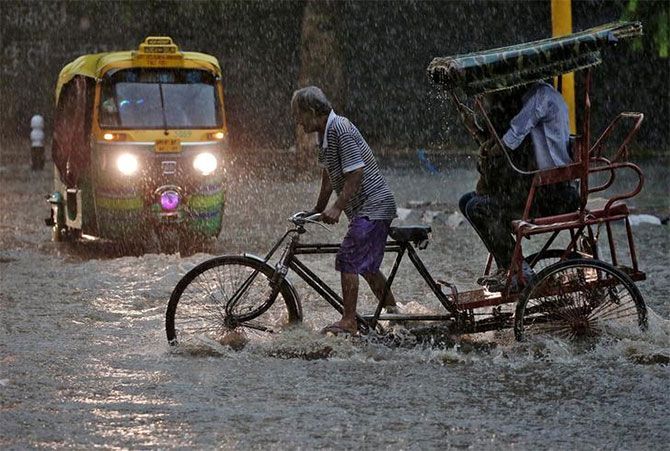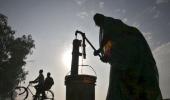As the month ended with 33 per cent deficiency, which translates to around 67 per cent of the Long Period Average, several parts of the country have been witnessing drought-like situation.

Monsoon deficiency in June this year was the highest for the month since 2015, India Meteorological Department data revealed.
The month ended with 33 per cent deficiency which translates to around 67 per cent of the Long Period Average (LPA).
"Monsoon was deficient in June," said Mritunjay Mohapatra, additional director general, IMD.
Several parts of the country have been witnessing drought-like situation.
The Central Water Commission data revealed that as on June 27, of the 91 major reservoirs in the country, 62 water bodies reported 80 per cent or below normal storage.
Anything below 90 per cent of the LPA is considered "deficient".
Rainfall in the range of 90-96 per cent is considered "below normal" and "normal" when it is between 96-104 of the LPA.
Precipitation in the range of 104-110 per cent of the LPA is considered "above normal" and "excess" when it is beyond 110 per cent of the LPA.
In 2018, June recorded rainfall with 95 per cent of the LPA. The situation was better in 2017 which saw rainfall of 104 per cent of the LPA.
June 2016 recorded 89 per cent of the LPA while June 2015 recorded 116 per cent of rainfall, which falls under the "excess" category.
Monsoon in June 2014 was 58 per cent of the LPA.
This year, monsoon made an onset over Kerala, which marks the official four-month rainfall season in the country, on June 8.
This was eight after its normal onset date of June 1. Its progress was also sluggish due to Cyclone Vayu in the Arabian Sea.
The progress of monsoon is expected to be good this week due to a low-pressure area in the Bay of Bengal.
Photograph: Cathal McNaughton/Reuters











 © 2025
© 2025